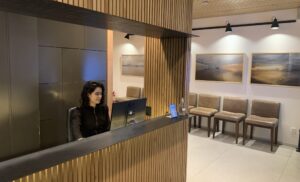About Snoring and Sleep Apnea
Sleep Dentistry allows the dentist to act in the treatment of disorders related to breathing problems during sleep, such as snoring and obstructive sleep apnea (OSAHS).
Sleep apnea and hypopnea syndrome (OSAHS) is a chronic, progressive, disabling respiratory disorder with high morbidity and mortality, characterized by partial (hypopnea) or total (apnea) obstruction of the upper airways. Its appearance is associated with genetic and environmental factors and can worsen with the use of alcohol, drugs, sedentary lifestyle, aging, mouth breathing, obesity, tonsil and adenoid hypertrophy, dorsal decubitus, retrognathism, macroglossia and others. Epidemiological studies have suggested that 2 to 4% of the population suffer from this syndrome and that its prevalence is increasing due to the obesity epidemic. The male population has a higher prevalence with 9% between 30 and 60 years of age and women represent 4%.
Individuals with OSAHS have compromised quality and life expectancy. Among the signs and symptoms, snoring is the main clinical marker; excessive daytime sleepiness, non-restorative sleep; changes in cognitive functions in which they have attention, memory and concentration deficits; changes in neuroendocrine and cardiovascular functions; night urine; morning headache; changes in mood and physical fatigue.



